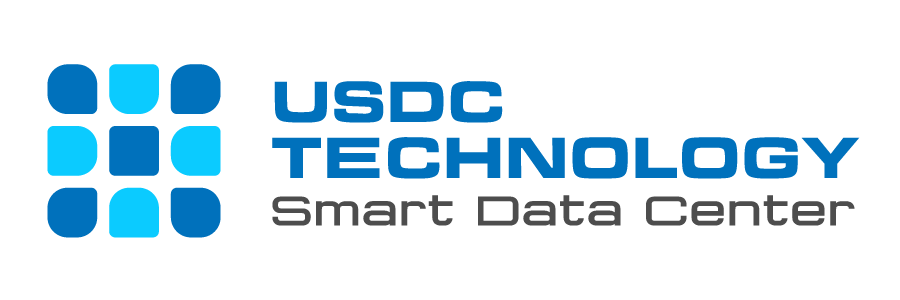Cloud computing, which underpinned the world’s economy, global supply chains, and remote workforces during the coronavirus pandemic, will continue to be an essential target for organizations looking for increased scalability, business continuity, and cost-efficiency in 2021.
The impact of COVID-19 will continue until 2021, and the advantages of cloud service accessibility, scalability, and flexibility will be further enhanced. Forrester Research said that the global public cloud infrastructure market will grow by 35% by 2021, reaching US$120 billion. Gartner predicts that public cloud spending by global end users will increase by 18% next year, reaching $304.9 billion.
1. Global Public Cloud Infrastructure Market Hits $120 Billion
The global public cloud infrastructure market will grow 35 percent to $120 billion in 2021, as the cloud continues to “take center stage” in the recovery from the pandemic, according to Forrester Research.
While software as a service (SaaS) still will be the largest market segment for end-user cloud IT spending – it’s expected to grow approximately 16 percent to $117.8 billion — application infrastructure services (PaaS) is expected to grow at a higher 26.6 percent rate to about $55.5 billion, according to Gartner. The growth in PaaS will be driven by remote workforces’ continued need to access high-performing and scalable infrastructure via modernized and cloud-native applications, it said.
“The cloud is being used to facilitate much of our remote work environments, so companies will continue to migrate workloads and begin using more PaaS resources to take maximum financial advantage of these somewhat forced changes,” said George Burns III, senior consultant for cloud operations at SPR, a Chicago-based technology modernization firm.
Cloud system infrastructure services (IaaS) spending is projected to increase by 26.9 percent to $65.3 billion.
2. Rearrangement of the three major cloud providers
There will be a reshuffling of the top three public cloud providers in 2021, with China’s Alibaba Cloud displacing Google Cloud to take the No. 3 spots for revenue in the global public cloud infrastructure market. behind No.1 Amazon Web Services and Microsoft, according to Forrester.
Alibaba’s cloud computing revenue grew 59 percent year-over-year to $2.19 billion for the quarter that ended Sept. 30, driven by the acceleration in digitalization across industries and businesses of all sizes in China, the company disclosed this month. Revenue from customers in the internet, finance, and retail industries were the primary growth drivers.
3. Edge computing is the new cloud
Edge is the new cloud, and new edge vendors will trim 5 points from public cloud growth next year, according to Forrester’s predictions. “In 2021, we will see new business models emerge that facilitate the deployment of edge, efforts by cloud platforms to compete, and AI and 5G facilitating the expansion of edge use cases,” Forrester said.
Large vendors including Dell, HPE, IBM, and Intel are doubling down on the edge with cloud-like solutions deployable to anywhere, according to Forrester, and content delivery networks and data center colocation vendors are offering edge compute services across hundreds or thousands of local points of presence.
While the centralized cloud isn’t going anywhere, developments in serverless computing models and the creation of distributed service layers around the cloud are powering new real-time IT applications, according to Miller-Jones.
“Enterprises are looking to the network edge to bridge the gap between the centralized cloud and end-users, providing low-latency application and content performance for all users, wherever they are working from, Miller-Jones said. “Integrating a distributed edge strategy within a broader cloud computing effort is key to continued innovation in 2021,” he said. “Environments at the network edge that scale when needed, are instantly accessible and that is consumed as a service are key developments in this new paradigm.”
4. Artificial Intelligence Engineering
Organizations need a strong artificial intelligence (AI) engineering strategy to ensure their AI projects don’t fail, Gartner said in its “Top Strategic Technology Trends for 2021” report. “Without AI engineering, most organizations will fail to move AI projects beyond proofs of concept and prototypes to full-scale production,” Gartner said.
AI projects often are not successful because of maintainability, scalability, and governance issues, but a strong AI engineering strategy will help the performance, scalability, interpretability, and reliability of AI models while delivering the full value of AI investments, according to Gartner.
5. Multi-Cloud And Joint Cloud Provider Offerings
Next year will see the beginnings of multi-cloud and joint provider cloud offerings, as providers realize they can partner to accelerate go-to-market launches, capitalize on mutual strengths and “take on the 800-pound gorilla” that is AWS, according to Park.
The Oracle-Microsoft interconnect relationship that started in June of 2019 is an example of a relationship that could be expanded to take advantage of Oracle‘s networking and Microsoft’s ML capabilities, Young said.
Rivals Microsoft and Oracle last year announced they were linking their clouds to allow joint customers to migrate and run their enterprise application workloads across Microsoft Azure and Oracle Cloud. The move was seen as a bid by Redmond, Wash.-based Microsoft — the No. 2 cloud provider — and Redwood City, Calif., cloud underdog Oracle to better compete against AWS.
6. Going Serverless
Serverless is the next evolution from monolithic application architecture after service-oriented architecture and micro-services architectures. Serverless was among the top five fastest-growing PaaS cloud services for 2020, according to the Flexera 2020 State of the Cloud report.
“Serverless is a true cloud computing paradigm, and it is hard to overstate how much it will impact how much cloud is consumed going forward,” Swanson said. “It is such a compelling model, that applications will be designed and developed going forward to work with serverless, rather than serverless being developed to work with the way we currently develop applications.”
The industry already is on this journey with containers and cloud-hosted common applications as they drive the need for applications to be made up of smaller components that can be given different treatments, including running in different locations, according to Swanson.
7. Automated Cloud Orchestration And Optimization
Cloud platforms will continue to develop automated cloud orchestration and optimization as the complexity of managing both the quantity and quality of interconnected services across applications and services overwhelms even the savviest of IT organizations, according to Park.
“Automated service and performance management must be one of the most important aspects of choosing a cloud provider in 2021, as companies may have to manage a hundred or more services from a single cloud provider,” Park said.
8. The Growth Of SASE Adoption
While it’s at the peak of Gartner’s “Hype Cycle,” secure access service edge (SASE) will continue to gain adoption as organizations move past the quick response measures they enacted this year for their massive and unexpected increase in remote worker connectivity, according to Derek Brost, director of professional services for security and compliance at InterVision.
Pronounced “sassy” and primarily delivered as a cloud-based service, SASE is a network architecture that combines software-defined WAN capabilities and cloud-native network security services including zero-trust network access, secure web gateways, cloud access security brokers, and firewalls as a service.
9. ‘Perfect Storm’ Of Data Privacy And Cloud Migration
The combination of the coronavirus pandemic and an increase in cloud infrastructure will create the “perfect storm” for data governance and compliance in 2021. Organizations will continue to initiate projects to ensure secure data migration to the cloud — i.e. encryption of all data that is required by the enterprise data governance team before their IT or data teams are allowed to move data from on-premises to the cloud, Ganesan said.
Standalone data security and governance tools finally will become an integral part of mission-critical business processes, according to Ganesan. “In 2021, security, privacy, and governance will be embedded early in business processes,” he said. “Developers and technical teams will incorporate these requirements early when building new systems. IT teams will invest in tools to provide secure access to data while balancing ease of use and performance. As a result, data security, governance, privacy would become table stakes in all IT strategy.”
10. Increased Cloud Management And Cost Containment Challenges
For many enterprises, moving workloads to the cloud has greatly improved some operational efficiencies and collaboration, but it has also proven costly.
Beyond cloud waste, system platform and management vendors want to be relevant to the rapidly growing cloud computing market, and they understand that managing and operating cloud computing is a new operating paradigm that requires new platforms and tools, according to Swanson.
“While many new companies have sprung up dedicated entirely around cloud cost control, look for these tools to become consolidated and extended natively into production application stacks, as vendors look to make their offerings more appealing through built-in cloud efficiency and cost-management elements,” he said.
Read more related topics here: http://usdc.vn/blog/


